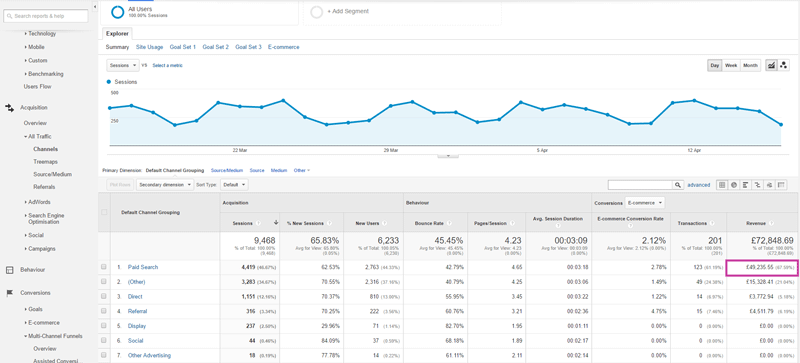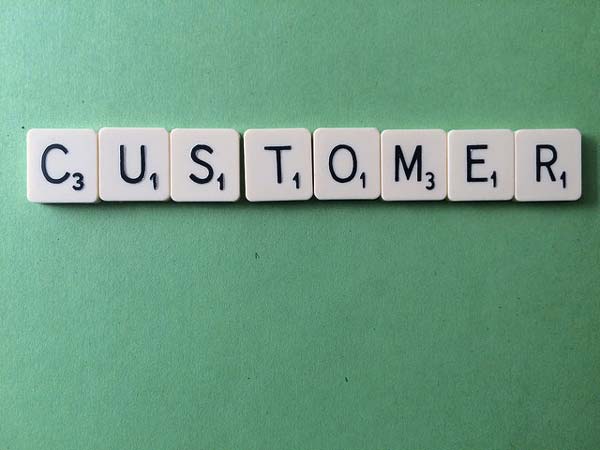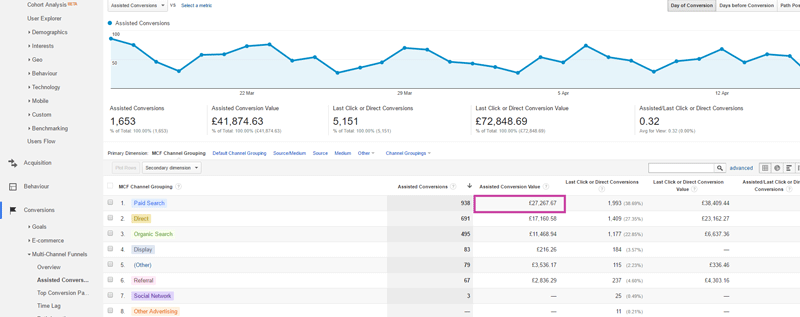5 Fantastic eCommerce PPC Measures of Success
Investing in pay per click (PPC) campaigns can be a great way to get instant brand visibility and revenue but when you’re spending money on attracting customers you understandably want tangible evidence of success! The “best” metrics or key performance indicators (KPIs) will vary across paid media platforms and campaigns; for example if you’re bidding on general category terms that drive traffic, you could boost revenue, but you may see ROI decrease. Conversely, if you focused on product terms you could increase revenue and ROI, whilst reducing your brand visibility. These are business choices and the KPIs we’re discussing in this post should, of course, be chosen as a result of your brand’s business goals.
When looking at these KPIs it’s important to remember that without the right human interpretation good data is useless. With that being said let’s take a look at our top 5 eCommerce PPC metrics…

Image source: Mike Christie via Wikimedia
1. PPC Revenue
It probably comes as little surprise that revenue is at the top of most eCommerce brands’ wish lists! The report for PPC revenue can be found very easily in Google Analytics under:
Acquisition > All Traffic > Channels > Paid Search - Revenue

The data on its own will not tell you very much. It is typically best to compare your data against the same period for the previous year. If you’re lucky enough to have this data, this will be the best comparison you can make to get a picture of growth and campaign performance. Remember to take into account recent changes in the retail calendar like Black Friday cannibalising some of December’s revenue into November.
2. PPC ROI
Well your revenue is up, but perhaps you’ve doubled your media budget? This is why looking at the ROI of your paid media campaigns is the next most important metric after revenue.
Return on ad spend (ROAS) is the most commonly used metric when determining ROI and looks like this:
(PPC Revenue – PPC Cost) / PPC Cost
This is a nice straightforward calculation that focuses more directly on the performance of paid media work rather than other costs which might be included elsewhere in the business. For example, ROI is defined as:
(Profit – Cost) / Cost
The broad term for “cost” here can include everything from cost of goods to credit card processing and the cost of returning services. If you are including these additional overheads then it can make paid campaigns look less attractive unless you take into consideration the customer lifetime value which would include repeat orders over many future years.
3. PPC CPA
Inevitably linked to paid media ROI is cost per acquisition (CPA) which is representative of revenue as opposed to cost per conversion which can be something like an email sign up. Target CPAs will vary from business to business depending on the price of your products and customer lifetime value. If you’re starting from scratch you can use the formula:
Average Revenue per Customer = Yearly Revenue/Yearly Customer Count
This formula can be applied to any time period and obviously doesn’t really account for existing customers. If you’re looking in Google Analytics, you could take revenue from new visitors divided by the number of new visitors. But however you’re calculating CPA and whatever your business’ target CPA may be, a well run paid media campaign is typically aiming to incrementally lower this.
4. PPC Transactions
Paid media transactions indicate the volume of people who purchased through a paid media campaign. Transactions and conversion rate demonstrate how well your campaigns are targeted to the audience. For example, people who click on product listing ads (PLAs) are more likely to purchase the specific product which was advertised, making revenue alone less meaningful as a measure of success on those types of campaigns.
A large proportion of consumers clicking on a paid ad, whether in AdWords, Bing Ads or a PLA, may be new customers. This means that transactions are in part a measure of new visitors who are now not only aware of your brand but involved with your brand enough to make a purchase! For many brands the value of acquiring this new customer goes well beyond the single sale to instead focus upon the entire customer lifetime value gained as a result of this new customer.

Image source: Jeff Djevdet via Flickr cc
5. PPC Assisted Revenue
Only looking at last-click attribution can create a distorted picture of success. Many of your customers might find your brand through PPC but then come back through another channel to make their purchase. This is particularly relevant if your products are “high involvement” purchases where the consumer feels the need to research the product and spend some time deciding. In these instances, PPC should rightfully be attributed with some, if not the lion’s share of revenue for that sale. In Google Analytics you can find this information under:
Conversions > Multi-Channel Funnels > Assisted Conversions > Paid Search – Assisted Conversion Value

The bigger your eCommerce brand grows the more sophisticated and complex your multi-channel strategy will likely become and the more analysing channel contribution will become a priority.
Thanks for Reading
Follow my contributions to the blog to find out more about digital marketing measurement or sign up to the ThoughtShift Guest List, our monthly email, to keep up-to-date on all our blogposts, guides and events.
